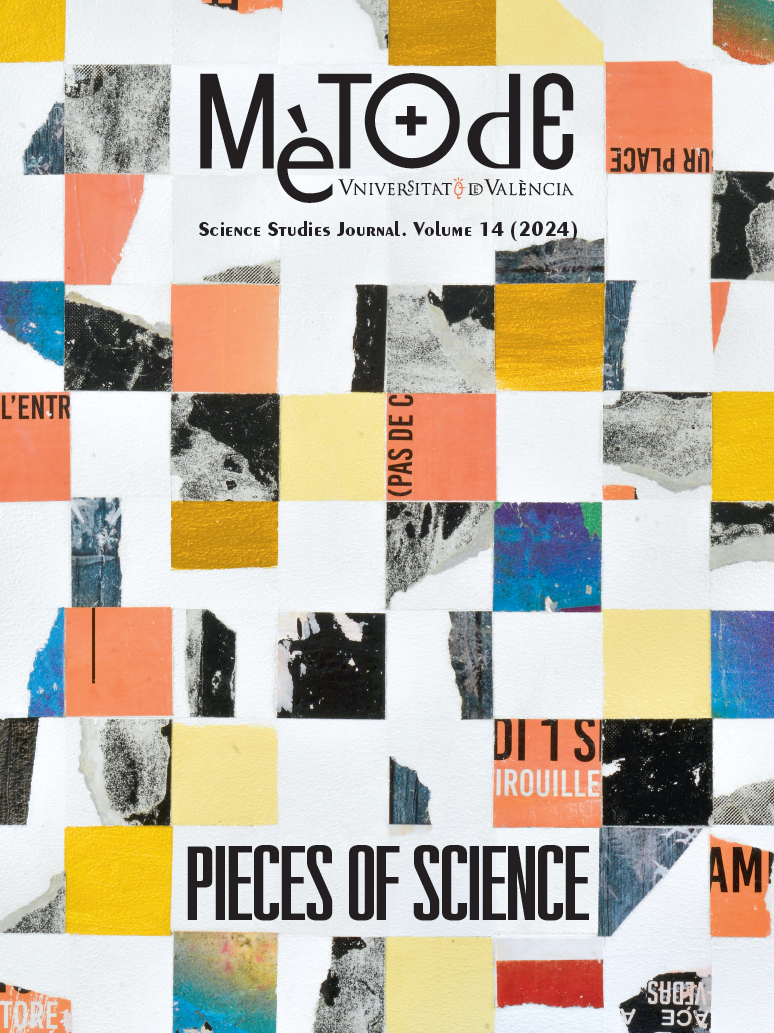The interface between humans and other primates: The case of the Republic of Guinea-Bissau
DOI:
https://doi.org/10.7203/metode.14.25532Keywords:
chimpanzees, local communities, shared ecologies, anthropogenic landscapes, conservation Abstract
Abstract
With this paper we invite the reader to join us to a field trip to Guinea-Bissau through our eyes as primatologists and to explore the entanglements between humans and non-human primates. The first time we went to the field was in 2003. After staying with an NGO for a while, we set up a field station in a protected area that was home to chimpanzees (Madina Field Station). However, soon we realized that «protected areas», «high-quality forest», or «suitable habitat for chimpanzees» would not make any difference for research – and, most importantly, for this ape’s conservation – without taking into consideration the locals’ attitudes. Humanized landscapes most probably will become the rule in the future, so finding a way for a peaceful coexistence is urgent.
 Downloads
Downloads
 References
References
Amador, R., Casanova, C., & Lee, P. (2015). Ethnicity and perceptions of bushmeat hunting inside Lagoas de Cufada Natural Park (LCNP), Guinea-Bissau. Journal of Primatology, 3(2), 1000121.
Arluke, A., & Sanders, C. (1996). Regarding animals. Temple University Press.
Casanova, C., Sá. R., & Sousa, J. (2020). Wild chimpanzee (Pan troglodytes verus) attacks on children in the Republic of Guinea Bissau [abstract]. 7th Iberian Congress of Primatology «Empathy, education, and conservation: Primates in a shared world». Folia Primatologica, 89, 5–6. https://doi.org/10.1159/000506768
Casanova, C., & Sousa, C. (2007). National action plan for the conservation of chimpanzee, Western red colobus and Western black and white colobus populations in Guinea-Bissau Republic. Instituto da Biodiversidade e das Áreas Protegidas. Ministério do Desenvolvimento Rural e Agricultura, Recursos Naturais e Ambiente.
Casanova, C., Sousa, C., & Costa, S. (2014). Are animals and forests forever? Perceptions of wildlife at Cantanhez Forest National Park, Guinea-Bissau Republic. In C. Casanova & S. Frias (Eds.), Memória (pp. 69–104). Sociedade de Geografia de Lisboa.
Colmonero-Costeira, I., Costa, S., Bruford, M. W., & Ferreira da Silva, M. J. (2021). As percepções do grupo étnico Bijagó acerca do seu ecossistema insular e implicações para a conservação dos primatas não humanos. II Conferência Nacional de Antropologia do Ambiente, Sociedade de Geografia de Lisboa.
Costa, S. (2010). Social perceptions of nonhumans in Tombali (Guinea-Bissau, West Africa): A contribution to chimpanzee (Pan troglodytes verus) conservation [PhD thesis, University of Stirling]. CORE. https://core.ac.uk/reader/9047940
Costa, S., Casanova, C., & Lee, P. (2017). What does conservation mean for women? The case of the Cantanhez Forest National Park. Conservation and Society, 15(2), 168–178. http://www.jstor.org/stable/26393284
Costa, S., Casanova, C., Sousa, C., & Lee, P. (2013). The good, the bad and the ugly: Perceptions of wildlife in Tombali (Guinea-Bissau, West Africa). Journal of Primatology, 2(1), 1000110.
Global Forest Watch. (2023). Global forest map. https://www.globalforestwatch.org/map/
IBAP. (2007). Estratégia nacional para as áreas protegidas e a conservação da biodiversidade na Guiné-Bissau 2007-2011. Instituto da Biodiversidade e das Áreas Protegidas. https://ibapgbissau.org/wp-content/uploads/2022/12/Estrategia-Nacional-para-APs-2007-2011.pdf
IUCN. (2023). The IUCN red list of threatened species. International Union of Conservation of Nature and Natural Resources. https://www.iucnredlist.org
Lundy, B. D. (2021). Cashews in conflict. In A. Ahmed & A. Gasparatos (Eds.), Political ecology of industrial crops. Routledge.
Minhós, T., Wallace, E., Ferreira da Silva, M. J., Sá, R. M., Carmo, M., Barata, A., & Bruford, M. W. (2013). DNA identification of primate bushmeat from urban markets in Guinea-Bissau and its implication for conservation. Biological Conservation, 167, 43–49. http://doi.org/10.1016/j.biocon.2013.07.018
Quinn, C., Huby, M., Kiwasila, H., & Lovett, J. C. (2003). Local perceptions of risk to livelihood in semi-arid Tanzania. Journal of Environmental Management, 68(2), 111–119. https://doi.org/10.1016/s0301-4797(03)00013-6
United Nations Development Programme. (2022). Human Development Report 2021–22. https://hdr.undp.org/content/human-development-report-2021-22
Worldmeter. (2023). Guinea population (1950-2020). https://www.worldometers.info/world-population/guinea-population/
Downloads
Published
How to Cite
-
Abstract941
-
PDF189
Issue
Section
License
Copyright (c) 2023 CC BY-NC-ND 4.0

This work is licensed under a Creative Commons Attribution-NonCommercial-NoDerivatives 4.0 International License.
![]()
All the documents in the OJS platform are open access and property of their respective authors.
Authors publishing in the journal agree to the following terms:
- Authors keep the rights and guarantee Metode Science Studies Journal the right to be the first publication of the document, licensed under a Creative Commons Attribution-NonCommercial-NoDerivatives 4.0 International License that allows others to share the work with an acknowledgement of authorship and publication in the journal.
- Authors are allowed and encouraged to spread their work through electronic means using personal or institutional websites (institutional open archives, personal websites or professional and academic networks profiles) once the text has been published.





